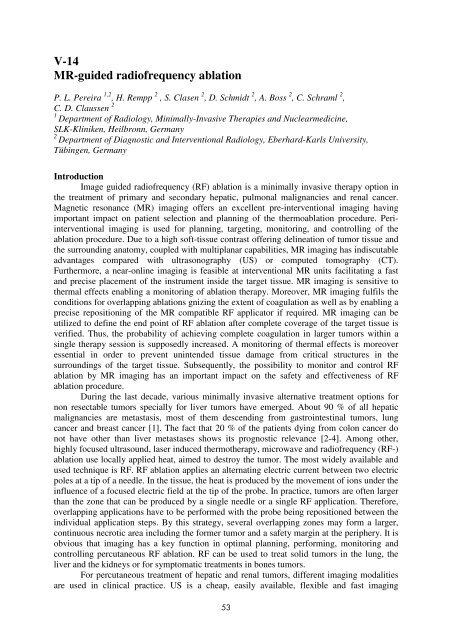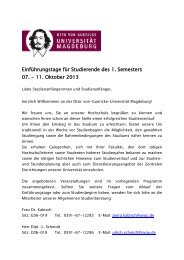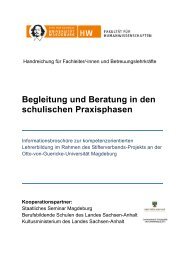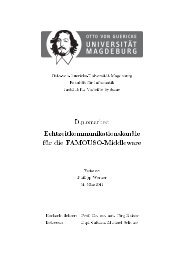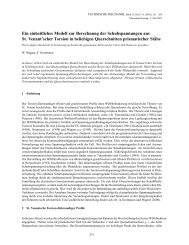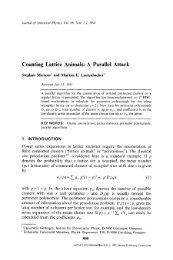8th Interventional MRI Symposium Book of Abstracts - Otto-von ...
8th Interventional MRI Symposium Book of Abstracts - Otto-von ...
8th Interventional MRI Symposium Book of Abstracts - Otto-von ...
Create successful ePaper yourself
Turn your PDF publications into a flip-book with our unique Google optimized e-Paper software.
V-14<br />
MR-guided radi<strong>of</strong>requency ablation<br />
P. L. Pereira 1,2 , H. Rempp 2 , S. Clasen 2 , D. Schmidt 2 , A. Boss 2 , C. Schraml 2 ,<br />
C. D. Claussen 2<br />
1<br />
Department <strong>of</strong> Radiology, Minimally-Invasive Therapies and Nuclearmedicine,<br />
SLK-Kliniken, Heilbronn, Germany<br />
2<br />
Department <strong>of</strong> Diagnostic and <strong>Interventional</strong> Radiology, Eberhard-Karls University,<br />
Tübingen, Germany<br />
Introduction<br />
Image guided radi<strong>of</strong>requency (RF) ablation is a minimally invasive therapy option in<br />
the treatment <strong>of</strong> primary and secondary hepatic, pulmonal malignancies and renal cancer.<br />
Magnetic resonance (MR) imaging <strong>of</strong>fers an excellent pre-interventional imaging having<br />
important impact on patient selection and planning <strong>of</strong> the thermoablation procedure. Periinterventional<br />
imaging is used for planning, targeting, monitoring, and controlling <strong>of</strong> the<br />
ablation procedure. Due to a high s<strong>of</strong>t-tissue contrast <strong>of</strong>fering delineation <strong>of</strong> tumor tissue and<br />
the surrounding anatomy, coupled with multiplanar capabilities, MR imaging has indiscutable<br />
advantages compared with ultrasonography (US) or computed tomography (CT).<br />
Furthermore, a near-online imaging is feasible at interventional MR units facilitating a fast<br />
and precise placement <strong>of</strong> the instrument inside the target tissue. MR imaging is sensitive to<br />
thermal effects enabling a monitoring <strong>of</strong> ablation therapy. Moreover, MR imaging fulfils the<br />
conditions for overlapping ablations gnizing the extent <strong>of</strong> coagulation as well as by enabling a<br />
precise repositioning <strong>of</strong> the MR compatible RF applicator if required. MR imaging can be<br />
utilized to define the end point <strong>of</strong> RF ablation after complete coverage <strong>of</strong> the target tissue is<br />
verified. Thus, the probability <strong>of</strong> achieving complete coagulation in larger tumors within a<br />
single therapy session is supposedly increased. A monitoring <strong>of</strong> thermal effects is moreover<br />
essential in order to prevent unintended tissue damage from critical structures in the<br />
surroundings <strong>of</strong> the target tissue. Subsequently, the possibility to monitor and control RF<br />
ablation by MR imaging has an important impact on the safety and effectiveness <strong>of</strong> RF<br />
ablation procedure.<br />
During the last decade, various minimally invasive alternative treatment options for<br />
non resectable tumors specially for liver tumors have emerged. About 90 % <strong>of</strong> all hepatic<br />
malignancies are metastasis, most <strong>of</strong> them descending from gastrointestinal tumors, lung<br />
cancer and breast cancer [1]. The fact that 20 % <strong>of</strong> the patients dying from colon cancer do<br />
not have other than liver metastases shows its prognostic relevance [2-4]. Among other,<br />
highly focused ultrasound, laser induced thermotherapy, microwave and radi<strong>of</strong>requency (RF-)<br />
ablation use locally applied heat, aimed to destroy the tumor. The most widely available and<br />
used technique is RF. RF ablation applies an alternating electric current between two electric<br />
poles at a tip <strong>of</strong> a needle. In the tissue, the heat is produced by the movement <strong>of</strong> ions under the<br />
influence <strong>of</strong> a focused electric field at the tip <strong>of</strong> the probe. In practice, tumors are <strong>of</strong>ten larger<br />
than the zone that can be produced by a single needle or a single RF application. Therefore,<br />
overlapping applications have to be performed with the probe being repositioned between the<br />
individual application steps. By this strategy, several overlapping zones may form a larger,<br />
continuous necrotic area including the former tumor and a safety margin at the periphery. It is<br />
obvious that imaging has a key function in optimal planning, performing, monitoring and<br />
controlling percutaneous RF ablation. RF can be used to treat solid tumors in the lung, the<br />
liver and the kidneys or for symptomatic treatments in bones tumors.<br />
For percutaneous treatment <strong>of</strong> hepatic and renal tumors, different imaging modalities<br />
are used in clinical practice. US is a cheap, easily available, flexible and fast imaging<br />
53


